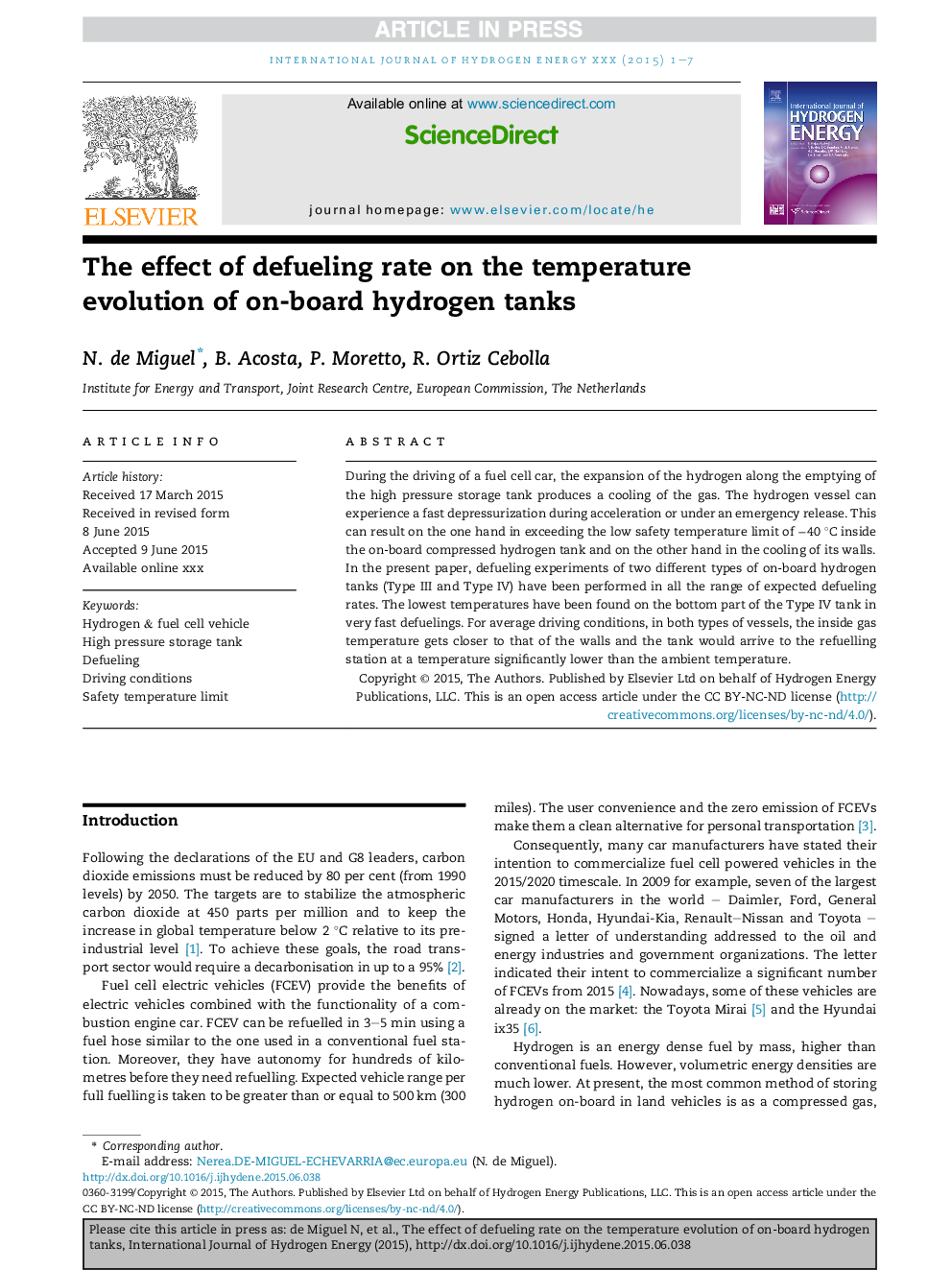| Article ID | Journal | Published Year | Pages | File Type |
|---|---|---|---|---|
| 7713859 | International Journal of Hydrogen Energy | 2015 | 7 Pages |
Abstract
During the driving of a fuel cell car, the expansion of the hydrogen along the emptying of the high pressure storage tank produces a cooling of the gas. The hydrogen vessel can experience a fast depressurization during acceleration or under an emergency release. This can result on the one hand in exceeding the low safety temperature limit of â40 °C inside the on-board compressed hydrogen tank and on the other hand in the cooling of its walls. In the present paper, defueling experiments of two different types of on-board hydrogen tanks (Type III and Type IV) have been performed in all the range of expected defueling rates. The lowest temperatures have been found on the bottom part of the Type IV tank in very fast defuelings. For average driving conditions, in both types of vessels, the inside gas temperature gets closer to that of the walls and the tank would arrive to the refuelling station at a temperature significantly lower than the ambient temperature.
Keywords
Related Topics
Physical Sciences and Engineering
Chemistry
Electrochemistry
Authors
N. de Miguel, B. Acosta, P. Moretto, R. Ortiz Cebolla,
